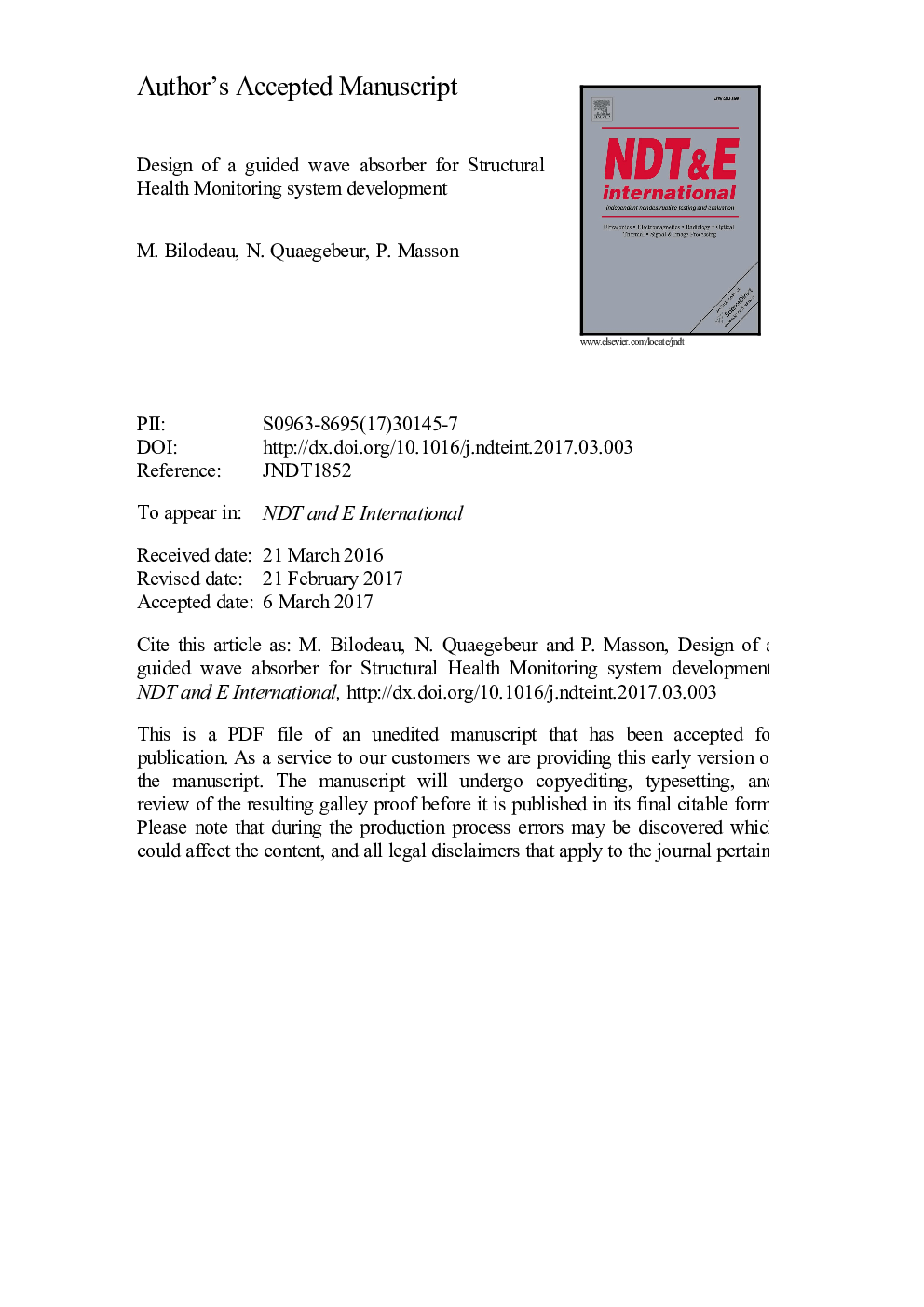| Article ID | Journal | Published Year | Pages | File Type |
|---|---|---|---|---|
| 4925231 | NDT & E International | 2017 | 25 Pages |
Abstract
The objective of this paper is to present and validate an efficient guided wave absorber for increased sensitivity of structural health monitoring systems based on guided wave, and especially for inspection close to structure boundaries. Such an absorber would also help with systematic characterization of guided waves interaction with defects in aerospace structures. A complete numerical parametric study is undertaken using the power flow in the structure to determine the reflection and transmission coefficients and thus the dissipated energy by the absorber. Starting with the determination of the geometry and dimensions using Finite Element Modelling (FEM), and following with an investigation on the influence of the absorber's mechanical properties, a practical and efficient absorber is identified. The dimensions of the developed absorber are minimized to provide optimal results for frequencies ranging from 50Â kHz to 500Â kHz for an incident A0 mode. The resulting right triangle cross section absorber of Teflon has been machined and tested experimentally using a piezoelectric wave generator on one side of the absorber, and a tri-dimensional laser Doppler vibrometer (3D-LDV) to measure the transmitted wave on the other side. Using a spatial Fourier transform approach for the determination of the experimental reflection and transmission coefficients, the numerical results have been successfully validated.
Related Topics
Physical Sciences and Engineering
Engineering
Civil and Structural Engineering
Authors
M. Bilodeau, N. Quaegebeur, P. Masson,
